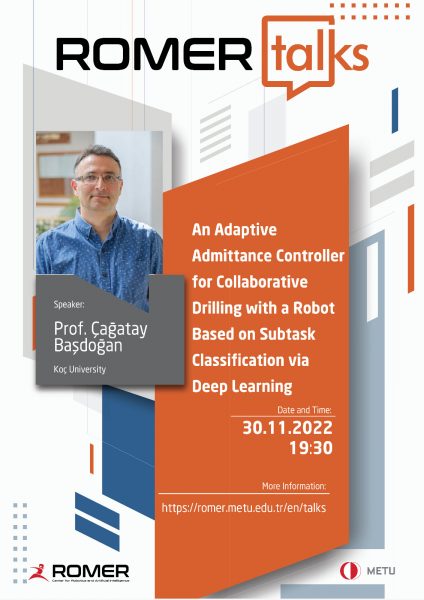Title: An adaptive admittance controller for collaborative drilling with a robot based on subtask classification via deep learning
Abstract: We propose a supervised learning approach based on an Artificial Neural Network (ANN) model for real-time classification of subtasks in a physical human–robot interaction (pHRI) task involving contact with a stiff environment. In this regard, we consider three subtasks for a given pHRI task: Idle, Driving, and Contact. Based on this classification, the parameters of an admittance controller that regulates the interaction between human and robot are adjusted adaptively in real time to make the robot more transparent to the operator (i.e. less resistant) during the Driving phase and more stable during the Contact phase. The Idle phase is primarily used to detect the initiation of task. Experimental results have shown that the ANN model can learn to detect the subtasks under different admittance controller conditions with an accuracy of 98% for 12 participants. Finally, we show that the admittance adaptation based on the proposed subtask classifier leads to 20% lower human effort (i.e. higher transparency) in the Driving phase and 25% lower oscillation amplitude (i.e. higher stability) during drilling in the Contact phase compared to an admittance controller with fixed parameters.
Bio: Prof. Basdogan is a member of faculty in College of Engineering at Koc University since 2002. Before joining to Koc University, he was a senior member of technical staff at Information and Computer Science Division of NASA-Jet Propulsion Laboratory of California Institute of Technology (Caltech) from 1999 to 2002. At JPL, he worked on 3D reconstruction of Martian models from stereo images captured by a rover and their haptic visualization on Earth. He moved to JPL from Massachusetts Institute of Technology (MIT) where he was a research scientist and principal investigator at MIT Research Laboratory of Electronics and a member of the MIT Touch Lab from 1996 to 1999. At MIT, he was involved in the development of algorithms that enable a user to touch and feel virtual objects through a haptic device (a force-reflecting robotic arm). He received his Ph.D. degree from Southern Methodist University in 1994 and worked on medical simulation and robotics for Musculographics Inc. at Northwestern University Research Park for two years before moving to MIT. Prof. Basdogan conducts research and development in the areas of human-machine interfaces, control systems, robotics, mechatronics, human-robot interaction, biomechanics, computer graphics, and virtual reality technology. In particular, he is known for his work in the area of human and machine haptics (sense of touch) with applications to medical robotics and simulation, robotic path planning, micro/nano/optical tele-manipulation, human-robot interaction, molecular docking, information visualization, and human perception and cognition. In addition to serving in the program and organizational committees of several conferences and journals, he also chaired the IEEE World Haptics Conference in 2011.
Prof. Dr. Cagatay Basdogan (Google Scholar)
Director of Robotics and Mechatronics Laboratory (http://rml.ku.edu.tr)
Faculty Member at KUIS AI-Center (http://ai.ku.edu.tr)
Koc University (http://www.ku.edu.tr)
Sariyer, Istanbul, 34450
Phone: +90 212 338 1721
e-mail: cbasdogan@ku.edu.tr
http://home.ku.edu.tr/~cbasdogan/

